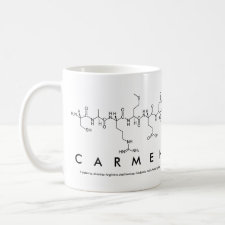
Authors: Ribeiro A, Veiga F, Santos D, Torres-Labandeira JJ, Concheiro A, Alvarez-Lorenzo C
Article Title: Bioinspired Imprinted PHEMA-Hydrogels for Ocular Delivery of Carbonic Anhydrase Inhibitor Drugs.
Publication date: 2011
Journal: Biomacromolecules
Volume: 12
Issue: (3)
Page numbers: 701-709.
DOI: 10.1021/bm101562v
Abstract: Hydrogels with high affinity for carbonic anhydrase (CA) inhibitor drugs have been designed trying to mimic the active site of the physiological metallo-enzyme receptor. Using hydroxyethyl methacrylate (HEMA) as the backbone component, zinc methacrylate, 1- or 4-vinylimidazole (1VI or 4VI), and N-hydroxyethyl acrylamide (HEAA) were combined at different ratios to reproduce in the hydrogels the cone-shaped cavity of the CA, which contains a Zn2+ ion coordinated to three histidine residues. 4VI resembles histidine functionality better than 1VI, and, consequently, pHEMA-ZnMA2 hydrogels bearing 4VI moieties were those with the greatest ability to host acetazolamide or ethoxzolamide (2 to 3 times greater network/water partition coefficient) and to sustain the release of these antiglaucoma drugs (50% lower release rate estimated by fitting to the square root kinetics). The use of acetazolamide as template during polymerization did not enhance the affinity of the network for the drugs. In addition to the remarkable improvement in the performance as controlled release systems, the biomimetic hydrogels were highly cytocompatible and possessed adequate oxygen permeability to be used as medicated soft contact lenses or inserts. The results obtained highlight the benefits of mimicking the structure of the physiological receptors for the design of advanced drug delivery systems



Join the Society for Molecular Imprinting

New items RSS feed
Sign-up for e-mail updates:
Choose between receiving an occasional newsletter or more frequent e-mail alerts.
Click here to go to the sign-up page.
Is your name elemental or peptidic? Enter your name and find out by clicking either of the buttons below!
Other products you may like:
 MIPdatabase
MIPdatabase









